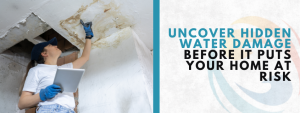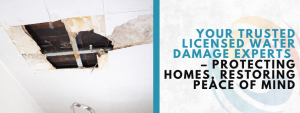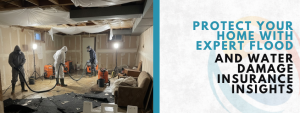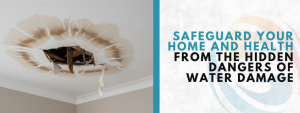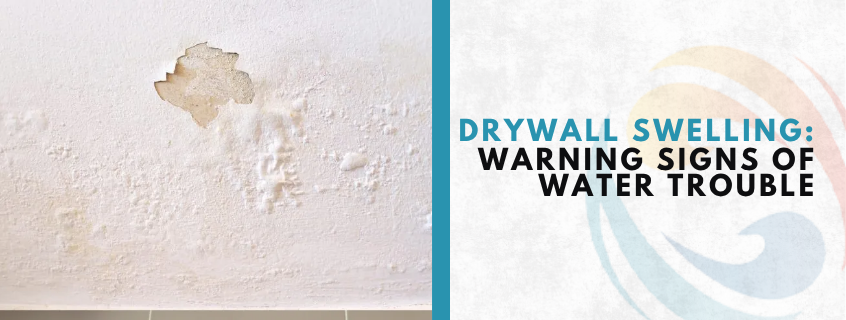
It starts off small—maybe a tiny bubble beneath your paint, or a barely visible curve along your living room wall. You might think it’s nothing, just the house settling. But these subtle shifts could be shouting a big warning: drywall swelling. This quiet but powerful sign could be telling you that water is lurking where it doesn’t belong.
Homeowners across the country deal with this issue, especially in areas where storms, plumbing leaks, and even coastal humidity are common. That’s why it’s essential to understand what drywall swelling really means, how to spot it early, and what steps you should take to protect your home.
How to Spot the Early Clues of Drywall Swelling
Sometimes the warning signs are easy to miss. You might not notice until it becomes a larger cosmetic issue, or worse, a structural concern. But knowing the red flags makes all the difference.
Here’s how you can detect the early stages of drywall swelling:
- Bubbling or Blistering Paint: Moisture trapped behind paint causes it to lift.
- Curving or Warping: A wall that looks wavy or bowed is a big giveaway.
- Soft or Spongy Texture: Lightly pressing on drywall and feeling it give way is a strong indicator.
- Visible Mold or Musty Odors: These are secondary signs of ongoing moisture damage.
- Discoloration or Stains: Yellow or brown water rings may form on the surface.
Imagine noticing your once-flat walls now have subtle curves, like a book left out in the rain. That’s your drywall speaking—pleading for help before further damage sets in.
What Causes Drywall Swelling?
Understanding what leads to drywall swelling helps you better protect your home. The core issue? Water. Once drywall absorbs moisture, it expands. And because drywall is made from gypsum—a material highly absorbent by nature—this expansion isn’t just temporary.
Let’s break it down into likely culprits:
Common Causes of Swelling:
- Leaky Pipes
Hidden plumbing leaks, especially behind walls or ceilings, cause long-term moisture buildup. - Roof Leaks
Damaged shingles or flashing can let water seep down the inner structure. - Flooding or Storm Damage
Heavy rainstorms or flooding can saturate drywall at the base of walls. - High Humidity or Poor Ventilation
Rooms like bathrooms or basements without good airflow invite condensation. - Window or Door Seal Failure
If exterior seals crack, wind-driven rain can make its way inside.
Each cause leads to the same result: moisture intrusion that softens, warps, and eventually weakens drywall.
Why You Shouldn’t Ignore Drywall Swelling
It’s tempting to overlook what seems like a cosmetic issue. But drywall swelling isn’t just an eyesore—it’s a red flag. When water seeps into your walls, it doesn’t stop at aesthetics.
Consequences of Neglecting Swelling:
- Mold Growth: Mold thrives in moist environments. Once it colonizes your drywall, it spreads fast.
- Compromised Structural Integrity: Waterlogged drywall loses strength and may collapse.
- Electrical Hazards: If moisture reaches wiring, it poses fire and electrocution risks.
- Increased Repair Costs: The longer you wait, the more expensive the restoration becomes.
Homeowners searching for Water Damage Restoration Manhattan Beach often wish they had caught the issue earlier. That first ripple in the wall? It could be the only warning you get before extensive damage happens.
What You Should Do When You See Drywall Swelling
You’ve spotted drywall swelling. Now what? Time is crucial. Quick action can prevent widespread destruction and health concerns.
Here’s a simple 5-step guide to follow:
- Stop the Water Source
Shut off your water main or contain the leak immediately. If a storm caused it, cover broken areas. - Assess the Damage
Use a moisture meter, or call in a professional to check how far the swelling goes. - Remove Damaged Sections
Cut out soggy drywall and insulation. Leaving it risks mold and rot. - Dry the Area Thoroughly
Use dehumidifiers and fans. Walls need to be fully dry before repairs begin. - Hire Professional Help
Don’t gamble with guesswork. Tap into reliable professionals who offer quality restoration services, such as those found at this trusted water restoration service.
The Link Between Drywall Swelling and Mold
One of the scariest parts of drywall swelling is what comes next: mold. It starts growing within 24–48 hours in damp conditions. And once it takes root, it becomes a health hazard.
Health Risks from Mold:
- Respiratory problems
- Allergy flare-ups
- Skin rashes
- Headaches and fatigue
Because swollen drywall traps moisture inside, it creates the perfect nest for mold spores. And once you see it on the surface, there’s a strong chance it’s already spread behind.
To make matters worse, DIY mold removal isn’t recommended for large areas. It requires professional-grade treatments to ensure complete safety.
How Professionals Handle Drywall Swelling
Fixing drywall swelling isn’t just about patching walls. Professionals follow a full restoration process that protects your home long term.
The Standard Restoration Process:
| Step | What Happens | Why It Matters |
| 1. Inspection | Damage is assessed with moisture mapping tools | Detects how deep the water has traveled |
| 2. Containment | Stops further water intrusion | Prevents additional drywall or flooring damage |
| 3. Dry-Out | Industrial fans and dehumidifiers dry the area | Stops mold from forming |
| 4. Removal | Swollen drywall and insulation are removed | Eliminates weakened structures |
| 5. Restoration | Clean, dry drywall is installed | Restores your home’s strength and look |
For those in beach areas or storm-prone zones, experts offering comprehensive water damage restoration are essential partners in recovery.
DIY vs. Professional: What’s Best for Drywall Swelling?
You might be tempted to tackle drywall swelling yourself. If the damage is small and limited to one section, it’s possible. But when water damage runs deep, DIY fixes won’t cut it.
Here’s a quick comparison:
DIY Fixes:
- Cheaper upfront
- Works for minor damage
- Risk of missing hidden issues
Professional Help:
- Accurate damage diagnosis
- Full mold and moisture control
- Long-term warranty and peace of mind
It’s like choosing between a bandage and a surgical fix. For the sake of your home’s future, professionals offer the most reliable outcome.
How to Prevent Drywall Swelling in the First Place
Prevention is better than repair, especially when it comes to water damage. While you can’t control Mother Nature, you can control your home’s readiness.
Ways to Prevent Drywall Swelling:
- Regularly Check Pipes and Appliances
Leaks from washing machines, water heaters, or sinks are common culprits. - Install Dehumidifiers
Especially useful in basements, laundry rooms, or coastal homes. - Seal Windows and Doors
Replace cracked caulking to block moisture entry. - Maintain Gutters and Downspouts
Redirect water away from walls and foundations. - Inspect Roof Annually
Even a missing shingle can lead to wet walls.
Homeowners who stay on top of these tasks are far less likely to deal with drywall swelling nightmares later.
Common Myths About Drywall Swelling
There’s a lot of misinformation out there. Believing myths can cost you time and money.
Let’s debunk a few of the biggest ones:
“If I don’t see water, everything’s fine.”
False. Drywall can soak up water invisibly. Moisture meters detect what your eyes can’t.
“Drying it with a fan will fix it.”
Partial drying only delays the problem. The wall may dry outside, but stay soggy within.
“I can just paint over it.”
Nope. Paint traps moisture and can speed up mold growth. Always fix the root issue first.
“Drywall swelling isn’t urgent.”
Wrong. It’s a ticking clock before mold, sagging, or full collapse.
Understanding what’s fact and what’s fiction will help you make smart decisions from the start.
What to Do If You’re Not Sure
Maybe you’re seeing bubbling paint, but no leak. Or your drywall seems bowed, but there’s no odor. It’s okay to be unsure.
In such cases, it’s wise to consult a restoration expert. Even a quick inspection can catch early-stage drywall swelling and help you avoid future trouble.
If you live in a high-humidity area or a place prone to coastal storms, like Manhattan Beach, connecting with a local expert in Water Damage Restoration Manhattan Beach is a smart move before small issues grow into big ones.
Final Thoughts: Your Walls Are Talking—Listen Closely
When it comes to drywall swelling, silence is dangerous. Walls won’t shout. They’ll whisper. They’ll bubble, bend, and discolor—giving you just enough clues before things take a serious turn.
Catch it early. Act fast. Call in the pros. Your home will thank you—and your wallet will too.
Whether it’s a hidden leak, storm damage, or rising humidity, don’t let drywall swelling sneak up on you. It’s a warning sign worth listening to.
And if you need trusted, reliable help, visit this expert restoration team that knows exactly what it takes to keep homes safe, dry, and damage-free.
Key Questions Homeowners Ask About Drywall Swelling
Can drywall swelling go away on its own?
No. Once it’s absorbed water, it will stay deformed unless cut out and replaced.
How quickly should I act?
Immediately. Mold can begin growing within a day.
Will insurance cover drywall damage?
It depends on the cause. Sudden issues like pipe bursts are often covered; slow leaks may not be.
What does drywall swelling feel like?
It’s often soft, mushy, or crumbly to the touch. In advanced stages, it may even fall apart.
Can I use bleach to stop mold?
Bleach only works on non-porous surfaces. It won’t penetrate drywall to kill mold growing inside.


